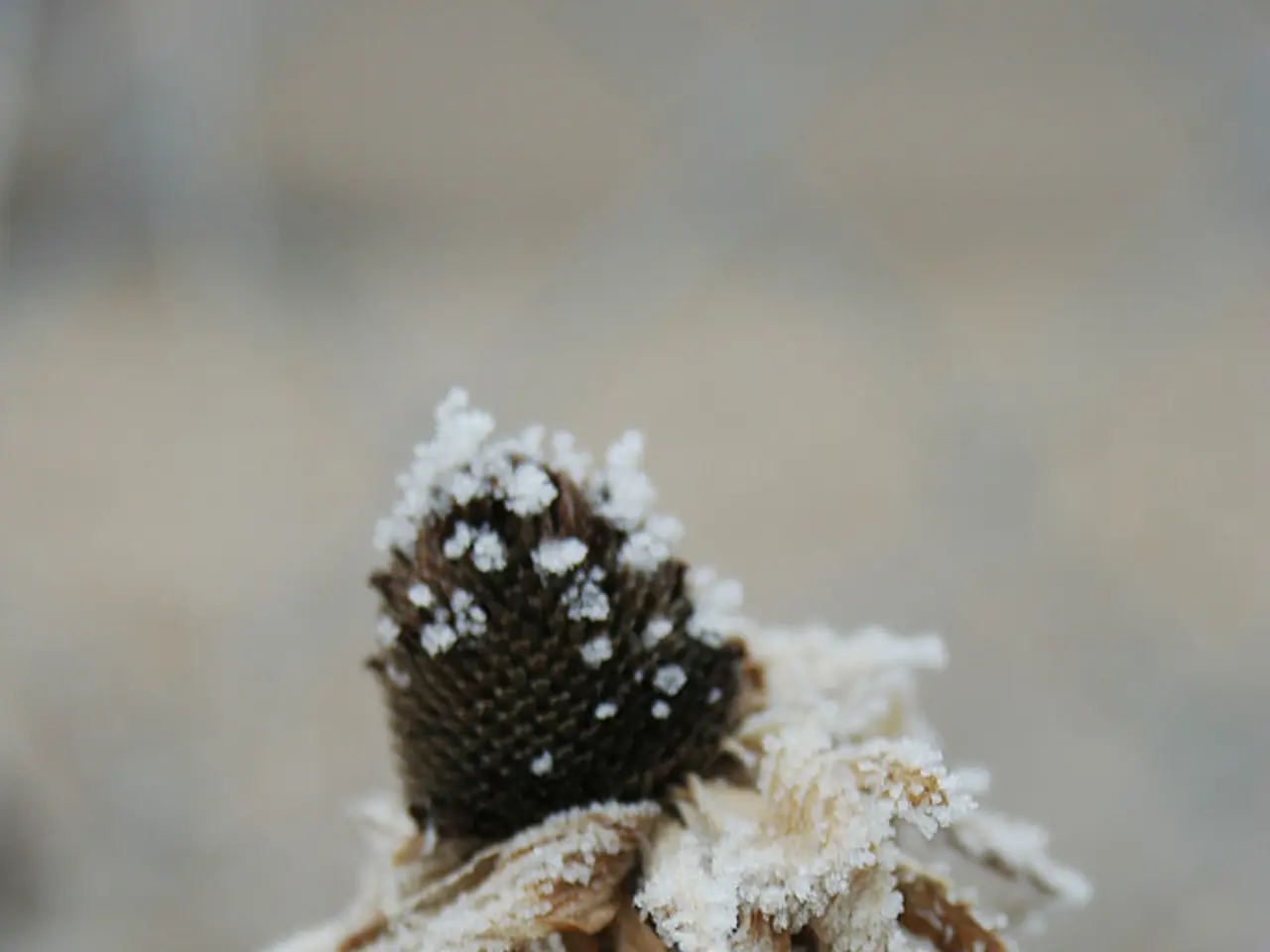Cold-Hardy Perennials and Plants for Growing in Chilly Climates
Gardening in Cold Climates: A Guide to Winter-Hardy Plants
For those living in USDA zones 3 and below, fall might not be the best time to plant. The soil conditions might not be ideal for transplanting, and it's essential to consider the quality and temperature of the soil when growing cold-hardy perennials.
When choosing plants for cold-climate gardening, it's recommended to opt for plants with USDA cold hardiness ratings of 3, 4, and 5. For beginners, it's a good idea to choose plants that are one zone or more cold-hardy than in your local region.
Some cold-hardy perennials include Foxglove, Bugbane, Meadowsweet, Sneezeweed, Yarrow, Jupiter's Beard, German Bearded Iris, Blue Flax, Beebalm, Catmint, Oriental Poppies, Beardtongue, Garden Phlox, Prairie Coneflower, Black-Eyed Susan, Ajuga, Spurge, Sea thrift, and Wormwood.
If you have tender transplants, install floating row covers for protection. For new transplants, create a water-holding base around the base of the plants then fill this barrier with high-quality coarse mulch. Avoid low spots as planting ground for plants that prefer fast-draining soils.
In arid climates, a long, final watering is necessary for fall transplants and mature plants after the first hard frost. Cold climate gardens can benefit from flowering bulbs that bloom during the spring season, such as daylilies, tulips, etc. Wildflowers would look lovely as they gracefully sway in the cold breeze.
Cold Hardy Groundcovers like Ajuga, Spurge, Sea thrift, and Wormwood can provide a beautiful groundcover, adding texture and colour to your garden.
For those living in USDA zones 7 to 10, fall transplanting is best, especially for regions that get mild winters and hot summers.
Cold climate gardens can also benefit from flowering shrubs such as Flowering Almond, Daphne, Forsythia, Lilac, Mock Orange, Quince, Weigela, Dogwood, Elderberry, Hydrangea, Ninebark, Potentilla, Smoke Tree, Spirea, Summersweet, Dappled Willow, Barberry, Burning Bush, Arborvitae, Boxwood, Juniper, False Cypress, Mugo Pine. Most shrubs, except for evergreens, weigela, and lilacs, can be pruned back once they go dormant late in the autumn season.
Fruit-bearing shrubs such as holly and Juniper are particularly attractive to birds.
For those living in warmer winter zones, there are tropical plants that can thrive. Plants labeled as hardy to zones 9 and 10 (where winter lows do not fall below 30°F) can include tropical or subtropical species, but they generally require zones with mild winters; exact species depend on the zone and local conditions.
To summarize:
| Plant Type | Example(s) | USDA Zones | Key Traits | |--------------|--------------------------------|---------------------|--------------------------------------| | Perennials | Christmas Rose, Rudbeckia | 3-8 (varies) | Winter blooms, evergreen foliage | | Shrubs | Calycanthus, Fothergilla, Mahonia| 4-9 (varies) | Winter flowers/foliage, shade tolerant| | Roses | Cold-hardy bred roses | 3-5 | Survive severe winters without cover | | Tropical* | Various species suited for zones 9-10+ | 9-10+ | Require mild winters, typically >30°F |
*Use tropical plants only in mild winter zones where temperatures do not drop below freezing[1].
Evergreen shrubs provide colour during cold months and attract garden-friendly critters. Using your specific USDA zone, you can select plants labeled “hardy to zone X” ensuring they tolerate your winter lows[1]. This provides a broad but targeted selection for winter gardening across various USDA zones.
- Incorporating evergreen shrubs like Ajuga, Spurge, Sea thrift, and Wormwood into your cold climate garden can offer color during winter months and attract beneficial garden critters.
- When opting for plants for a home-and-garden, specifically a home-and-garden focused on winter-hardy plants, it would be advantageous to choose groundcovers like Ajuga, Spurge, Sea thrift, and Wormwood for their ability to provide texture and color, as well as their cold-hardiness.




